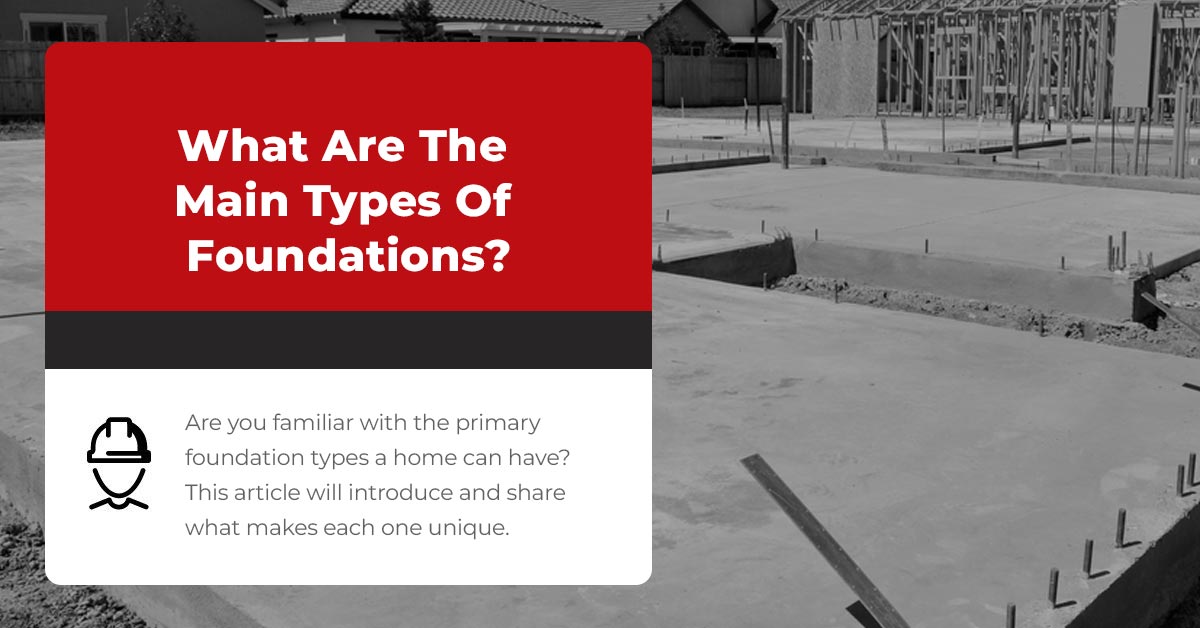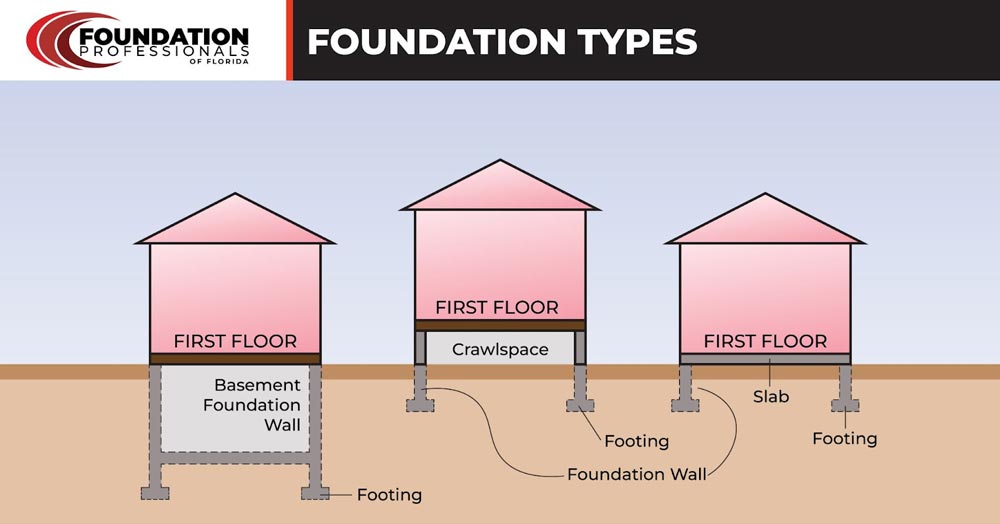Even though the foundation is one of a home’s most important structural elements, many homeowners don’t know much about it. For instance, did you know there are several main types of foundations, each with unique advantages and disadvantages?
If you answered “no” to that question or want a deeper understanding of foundation options, read on. In this article, we’ll detail the most common types of foundations so that you can better understand each one’s pros and cons.
Full Basement
One of the most common foundations is the “full foundation” or “full basement.” These foundations consist of walls (usually made of concrete) that extend deep enough into the earth to provide an additional usable floor for your home.
The usable space a full basement affords is one of its greatest attributes. If your full basement is unfinished, it remains useful for storage, laundry, and other functional tasks. Meanwhile, a fully finished basement adds a lot of comfortable living space for you and your family.
Along with providing usable space, full basements are another attribute that makes them especially advantageous for those in colder regions. Since full basements typically go below the frost line, they can resist the damage caused by frost heaves.
Concrete Slab
A concrete slab is one of the most straightforward of all foundation types. These foundations include a thick layer of concrete that rests on the ground’s surface while supporting the rest of the home above.
The main benefit of choosing a concrete slab is that they are significantly more affordable than full basements and other foundation types. However, that affordability comes at a cost because concrete slabs are prone to experiencing several common issues.
For example, since concrete slabs don’t go below the frost line, they are essentially unusable in regions with cold winters. In addition, concrete slabs provide no added living space, have minimal space for utility lines, and can be difficult to access for repairs.
Crawl Space
A crawl space is between a full basement and a concrete slab. While crawl spaces don’t provide a living area, they still allow for a buffer between the bottom of your house and the ground.
The narrow gap created by a crawl space allows air to circulate between your home and the ground, dramatically reducing moisture problems. Additionally, crawl spaces can provide some storage space–especially if you have to take time to encapsulate your crawl space.
What Is the Purpose of a Foundation?
At this point in the article, you likely have a firm understanding of the main types of foundations. However, we don’t want to conclude without providing insights into why foundations are essential to your home.
The essential purpose of a foundation is to provide structural stability for the entirety of your home. Foundations are constantly bearing the heavy load of your house while also holding back the soil surrounding it. A well-built foundation will remain steady and dependable despite those immense forces acting on it.
Along with that main purpose, foundations can play other roles as well. For example, full basement foundations and crawl spaces can create useful storage areas. Full basements are also valuable thanks to the functional space they provide.
Learn More from a Foundation Professional
Now that you understand the main foundation types and have a clear idea of how important your foundation is, the next step is to ensure that yours is damage-free and fully functional. The best way to do that is to seek the assistance of an experienced professional.
At Foundation Professionals of Florida, we can evaluate and repair your foundation, regardless of your type. If you’re interested in learning more about what we offer and taking advantage of a free estimate, contact us today!


